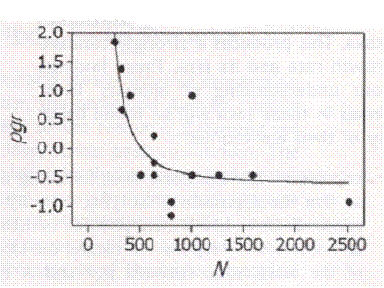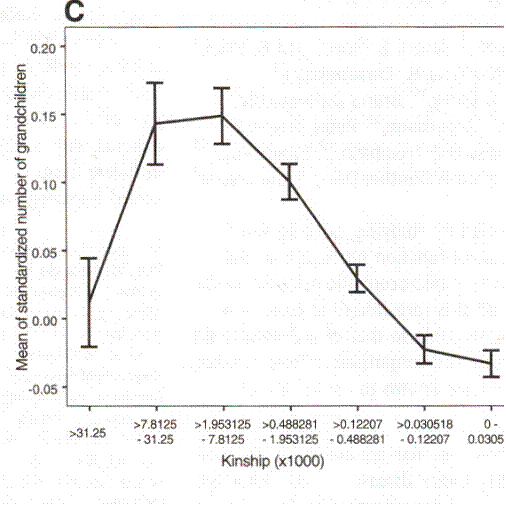
September 28, 2011
Nicole Gerlach
Postdoctoral Research Associate
Indian University
Department of Biology
Jordan Hall 142
1001 E. 3rd Street
Bloomington IN 47405
nmgerlac@indiana.edu
Dear Nicole Gerlach:
I read with great interest the review of your article by NATURE. (Infidelity Yields Better Offspring NATURE vol. 477 no. 7364 September 15, 2011 page 252 reviewing Proc. R. Soc. B Http://dx.doi.org/10.1098/rspb.2011.1547(2011))
I think you are in good company. I have long been in agreement with umpteen billion dewy eyed adolescent girls who told their parents that Jimmy or whoever didn’t love her while the parents said, “Don’t worry. There are lots of wonderful boys out there.”
“No, you don’t understand. This is worse than death. This is the end. The world is going insane.”
“Tut, tut.”
I’m sure some girls had made a good choice and some a regrettable one, but the bottom line it that, yes, it does matter whom you choose for a mate in the one sense that is important to evolution: fertility.
Their review says that in studying wild dark-eyed juncos (a kind of bird I am not familiar with in Florida) you found that although the birds form social pairs, more than a quarter of the offspring of the average female are sired by some male other than the social partner, and those that are sired outside the social pair go on to have more offspring than those sired within the pair. There are more details, but that alone is sufficient to indicate that those adolescents have been right. It matters.
Of course I suppose that one might take the point that the very act of promiscuity has some spooky effect, but let us not go there. All right, the review did say that this showed a positive genetic effect of multiple sex partners.
Really?
When I was a child our pet dog went into heat and drew suitors from quite a distance. My father speculated on which male would be the sire of the expected puppies. Having seen first hand the wild abandon with which she engaged her guests I suggested that the puppies might be half the offspring of one male, a quarter the offspring of another and so forth. He assured me that although the mother might have many mates, each puppy could have only one father. So what in the world multiple partners might offer is a bit beyond me. I mean Daddy is always right, right? He has to be. He takes orders from Mommy.
I suppose one might take the position that there were certain excellent males around with privileged genomes who were siring a disproportionate number of extra-pair offspring and endowing them with superb genes, but if you observed that, somehow it did not make it into the review.
But one need not speculate, fun though it is. The relationship between the fertility of the offspring and the choice of the parents is well established.
There is an article which compiled every then known serial field count of animals, more than a thousand found suitable for analysis, and compared population size with population growth rate. This is what they found.

On the Regulation of Populations of Mammals, Birds, Fish, and Insects. Richard M. Sibly, Daniel Barker, Michael C. Denham, Jim Hone, Mark Pagel SCIENCE VOL 309 22 JULY 2005 page 609 figure 1. The vertical axis is the population growth rate. The horizontal axis is the population size as estimated from population density. This is one of more than a thousand species analyzed, typically with the same shape of curve. They point out that growth rate should be very low at low population sizes because inbreeding depression is well established, but they did not observe it.
The smaller the population, the faster it grows. Get too big and it shrinks. This cannot be because of environmental limitations. That would give a curve concave downward. This goes the other way. Since these animals are not postponing children for career reasons or environmental concerns obviously the closer kin the more offspring.
It happens in humans, too.
They did a study in Iceland using their extensive genealogy to compare kinship with fertility, finding the same curve, and looked at the number of grandchildren, corresponding with your reproductive success of offspring of intra-pair and extra-pair matings.
This is what they found.

An Association Between Kinship And Fertility of Human Couples. Agnar Helgason, Snaebjoern Palsson, Daniel F. Guobjartsson, Pordur Kristjansson and Karl Stefanson, SCIENCE vol 319 8 February 2008 page 813 figure 3
Same old curve. There is no evidence for any effect of the peculiarly human motivations that might alter reproductive choices. In the end evolution treats us all the same and gives the same outcome.
So, on the basis of what is known, those females are choosing their social mate on the basis of Mommy knows what but spend a lot of time mating with closer kin, with the resulting increase in the reproductive success of their offspring.
This of course is a testable proposition if you can only keep track of all those birds.
The implication is very important. Notice that once kinship has fallen below .00008 or call it one part per ten thousand, which I make to be from the way they calculate something like seventh cousin, fertility falls below replacement. Unless people start marrying closer kin, the population must fall without floor. So those girls were right in their wildest complaint: rational thought must vanish when humans do.
Not that I see much evidence for rational thought as it is, but at least we have the words still.
Let me know what you think. I would be delighted to post anything you would like me to on my web site.
Sincerely,
M. Linton Herbert MD
There have been 26,403 visitors so far.